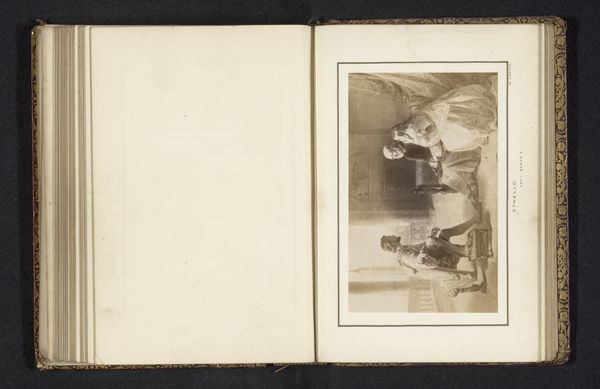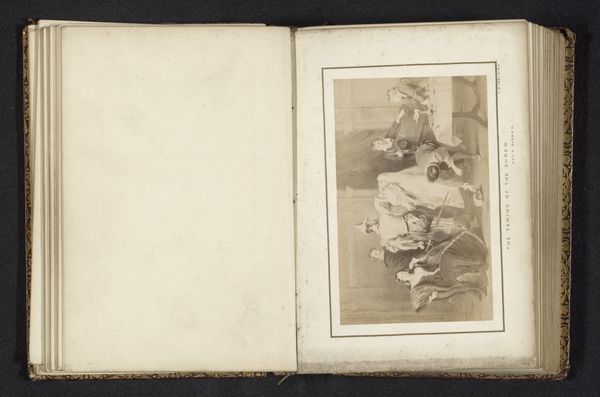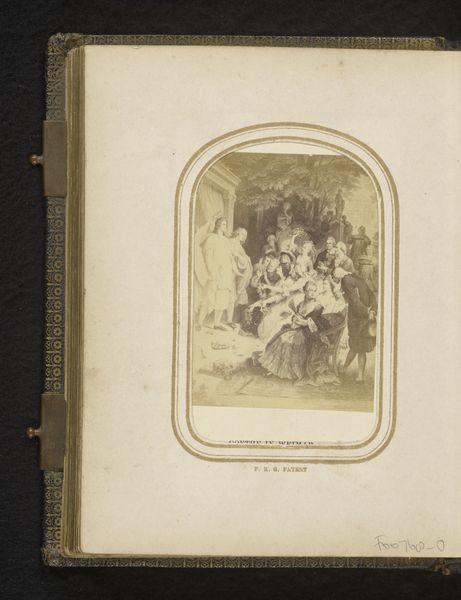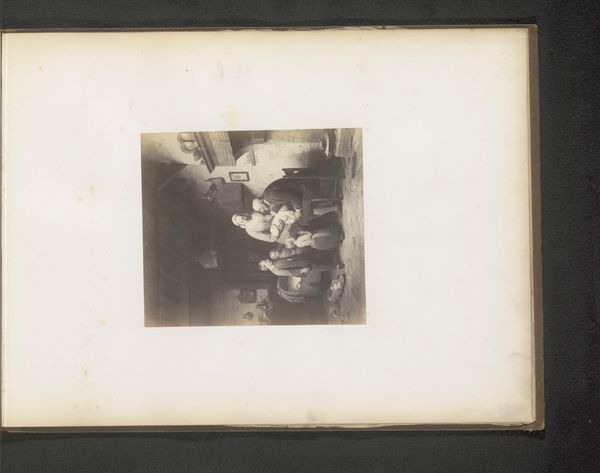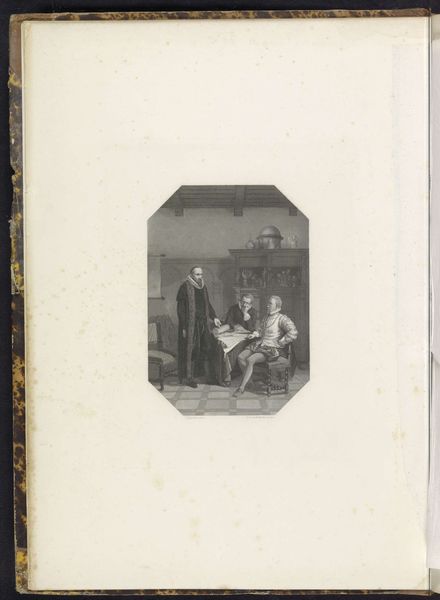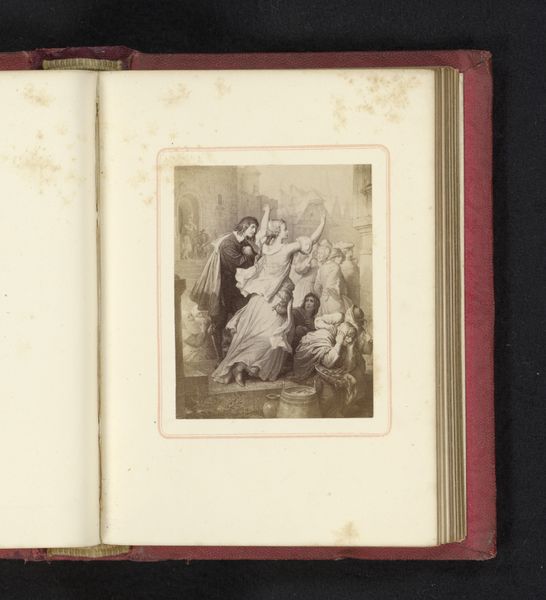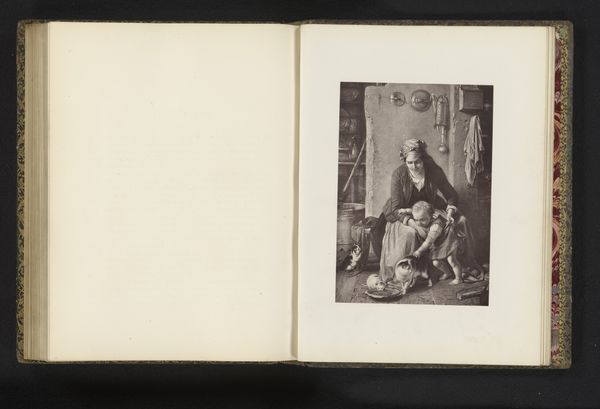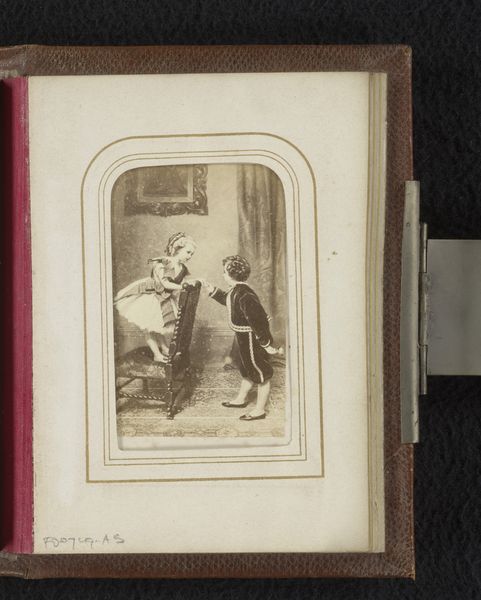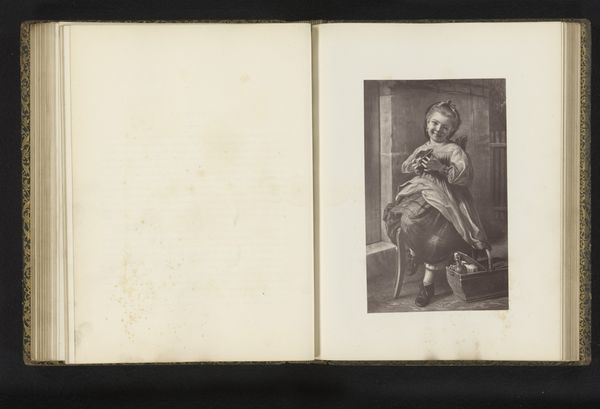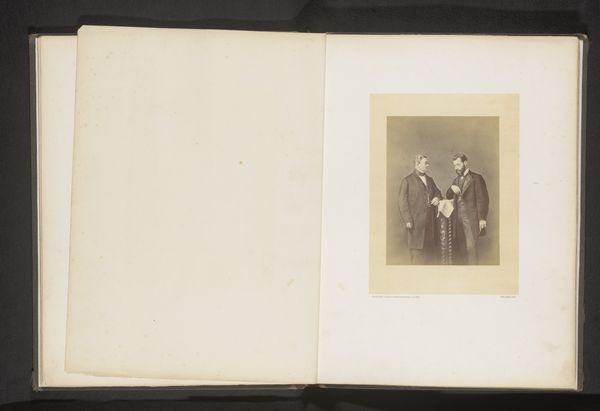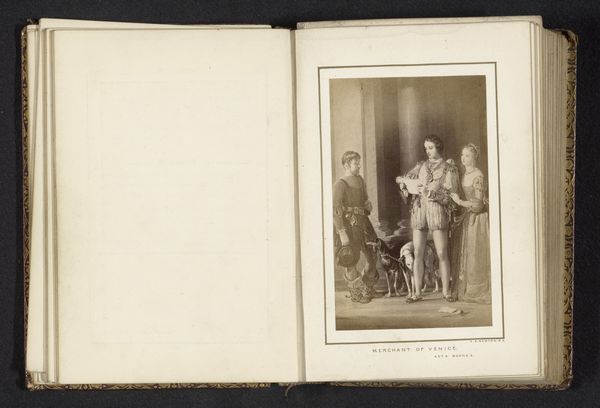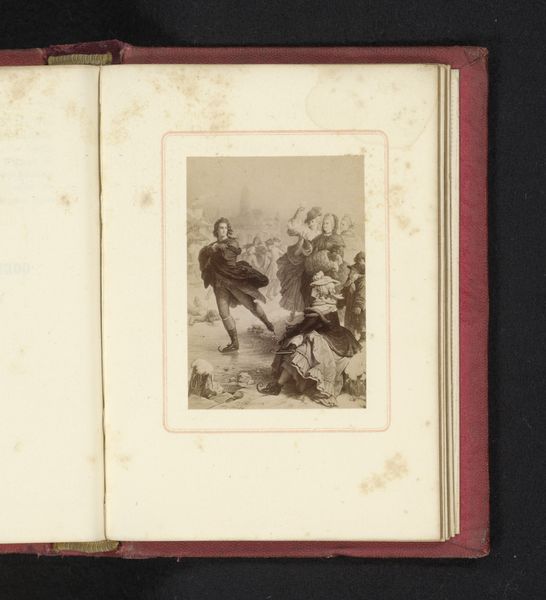
Fotoreproductie van een schilderij van een portret van Lodewijk, dauphin van Frankrijk en zijn zoon Lodewijk van Frankrijk door Nicolas de Largillière before 1887
0:00
0:00
Dimensions: height 120 mm, width 102 mm
Copyright: Rijks Museum: Open Domain
Curator: This gelatin silver print from before 1887 captures a painted portrait by Nicolas de Largillière, showing Louis, the Dauphin of France, alongside his son Louis. What strikes you first about this reproduction? Editor: It's the ghostly quality, honestly. The blurring softens the faces, turning royal figures into spectral emanations from the past. It looks almost like a fading memory, printed with unevenly distributed chemicals in the lab. Curator: The choice of gelatin silver as a medium here is interesting. It transforms a baroque painting into something that implicates both the mechanical reproduction and the skilled hand. We often forget that the darkroom and printmaking were skilled labor practices. Editor: Absolutely, and it brings up the crucial question: why reproduce this painting at all? It serves the political role of preserving imagery of the French monarchy and extending its reach through new mediums and circulation networks like books and postcards. It also solidifies the painter's place in history and validates its position in elite spaces like museums or stately homes. Curator: The photographer has, in essence, created a new object of value, operating in a different sphere of artistic and commercial exchange. Was it for a specific publication? Who held the rights? Such reproductions made art accessible to a much wider audience, but under carefully controlled circumstances of dissemination and ownership. The question is where was it printed and under what economic conditions? Editor: True. And look how this print flattens the rich textures of the original Baroque painting. The heavy brocades and detailed embroidery are now suggested rather than explicit. It makes you consider photography’s role not just as a reproductive tool, but as a reinterpreter, democratizing a visual narrative for new forms of consumption. Curator: Yes, and it reveals much about photographic practices of the time, too – their limitations and their possibilities. Examining photographic practices provides insights into contemporary artistic trends and taste formation as the image goes through its processes. Editor: Exactly. This spectral photo speaks volumes, not just about the royals it depicts, but about the very mechanisms of visibility and power. Curator: Indeed. It prompts us to look deeper into not just what is shown, but *how* it’s been brought to us.
Comments
No comments
Be the first to comment and join the conversation on the ultimate creative platform.
